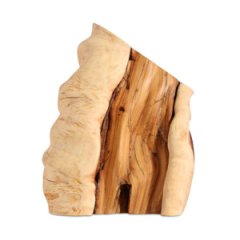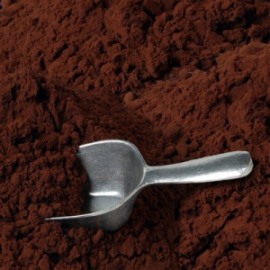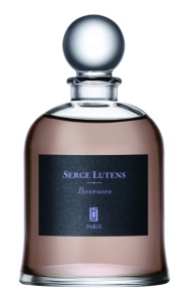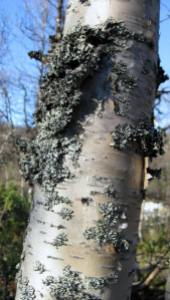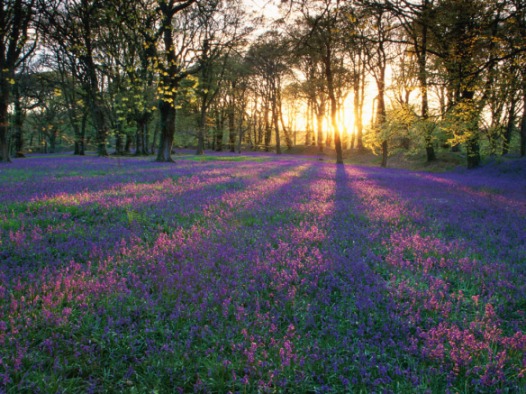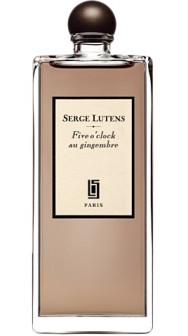There is a special beauty to sandalwood from Mysore, India. It’s incredibly rich, smoky, fiery, spicy, buttery, creamy, and undulating with sensuous depth. It’s a vision of red and bronze, and its incredibly smooth, luxurious aroma can’t be replicated by anything. Which is not only a damn shame but a huge problem as well, since the wood is so rare at this point that it might as well be extinct for the purposes of most commercial perfumery. Simply put, few perfumers can afford the real stuff, so they try for substitutes. The most common alternative is Mysore’s cousin, Australian sandalwood, whose creamy beigeness pretty much epitomizes its scent. It’s arid, endlessly beige, generic, and nothing spectacular.

Australian sandalwood. Source: Mountain Rose Blog, sellers of Australian sandalwood essential oils. http://mountainroseblog.com/choose-australian-sandalwood-essential-oil/
The same description applies to Santal Majuscule, the relatively new, sandalwood fragrance from Serge Lutens, and to its main problem in my eyes. Santal Majuscule is supposed to be sandalwood writ large, with even its name translating to “sandalwood with a CAPITAL letter!” But it’s not Mysore sandalwood, and the beige, chemical-laden, dry, generic woodiness that it does incorporate really isn’t very good at all.
Santal Majuscule was released late in 2012 as a sandalwood alternative for Serge Lutens’ export line, meaning it would be available worldwide. Created by Christopher Sheldrake, it is a scent that is supposed to be all about fairytales with a long video (read by Serge Lutens) about a little nine-year old boy in armour on his horse who brought life to gold, flowers and fire. On his website, Serge Lutens more succinctly describes the scent as
Sandalwood written in capital letters, full scale and life sized!
Oboedi silentiis meis non imperii: “Do not obey my orders, obey my silence”.
Turning powdery under the influence of bitter cacao, the sandalwood plunges deep into a velvety trap.
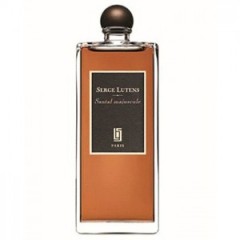 The perfume’s notes aren’t complicated and, according to both my nose and Luckyscent, seem to be:
The perfume’s notes aren’t complicated and, according to both my nose and Luckyscent, seem to be:
Sandalwood, rose, cocoa, tonka bean and immortelle [my addition, and something also noted by a few other blog reviews].
The very first flicker of Santal Majuscule on my skin is of rose. Beautiful, sweet, tender and visually pink, it almost immediately turns a little dusky through a heaping dose of cocoa powder. The latter is glorious and, initially, so dark that it almost evokes a coffee bean or mocha. Quickly, the cocoa-laden rose is joined by immortelle which has a definite maple syrup undertone.
Then, a sharp, acrid, synthetic and very chemical-smelling starts to bully its way in. It comes from the wood, and is harsh, peppered, and ever so lightly touched by ISO E Super. That’s actually not the problem at all. Rather, it’s the damnably acrid, almost pungent, incredibly strange and weird nuance to the sandalwood. I have to wonder if Lutens and Sheldrake used something similar to the supposedly sustainable, new kind of Australian sandalwood that Frederic Malle featured in his Dries Van Noten, because the wood note feels very much the same here: creamily generic, artificial, and reeking of a faintly gourmand sweetness. Here, however, the wood is also infused with a sharply chemical edge. The blog, State of the [Car]nation, had a review very aptly (and amusingly) entitled: “Ceci n’est pas santal – Santal Majuscule by Serge Lutens” in which he wrote:
So this is a spicy woody floral, but the wood is just another conventional accord dominated by the soft textures of cashmeran, iso-e-super and the likes. There is nothing here close to an actual Mysore sandsalwood note.
Now, I understand that real sandalwood is just a perfumista’s pipe-dream these days (unless you opt for Neela Vermeire‘s stunning creations which abound with gallons of the real thing), but the problem with Santal Majuscule is not the absence of Mysore sandalwood so much as it is the chemical underpinnings to the substitutes. I truly wouldn’t be surprised if Santal Majuscule’s Australian sandalwood was supported by cashmeran and similar wood synthetics, as detected by the other blog. Again, there is nothing wrong with seeking out alternatives, but why the hell do they have to smell so unpleasant here?
In those opening moments, the notes flit about like moths around a flame. The glowing light — and the best part of the perfume — is the cocoa powder which sits like a Buddha as the rose and immortelle dance around it. An odd, buttered note creeps in, smelling almost like an incredibly rich, buttered biscuit or cookie. The rose starts to change, feeling almost more like dried petals than anything syrupy or jammy. It has a peppery bent to it, thanks to the incredibly subtle tinges of ISO E Super at the base, and it starts to be a little less of a wallflower.
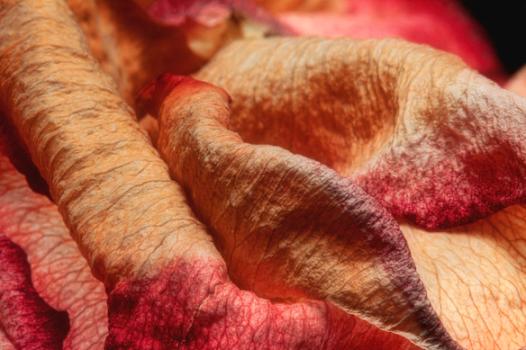
“Dried Rose Petals” by Tom Mc Nemar via Fineartamerica.
http://fineartamerica.com/featured/dried-rose-petals-ii-tom-mc-nemar.html
The most gorgeous part of the perfume, in my opinion, however, is the cocoa. Simply lovely! Though it started out feeling so dark that it almost had a coffee bean element to it, now, the powder is sweeter, richer, and verging on the most expensive milk chocolate. It doesn’t reach that level of sweetness, though — nothing about Santal Majuscule is really gourmand in nature thanks to the dryness — but the cocoa is much richer and creamier than it was at the start.
Twenty minutes in, Santal Majuscule changes a little in the underlying nuances. The wood loses a bit of its chemical pungency, turning sweeter and just barely less dry. Now, it feels like a blob of generic, beige woodiness with some sweet undertones. No, I’m not a fan, and no, it’s not because I’m a sandalwood snob. (Well, maybe just little….) It simply isn’t all that special, and it certainly doesn’t feel like the star of the perfume, let alone warranting the title “Sandalwood with a capital letter.” It’s more as if the sandalwood is a mere accessory to the real stunner in this fragrance: the cocoa powder. In the background, the immortelle loses its maple syrup undertone, changing into its more floral counterpart. The light, almost herbal, dry, woody elements to floral immortelle balances out that flittering butter cookie note, but neither one is very prominent, especially as compared to the sweet, dried roses.
What’s interesting is that the overall combination of notes creates a strong impression of something that almost verges on nutty, gingerbread cake. You know the sort of moist banana bread loaf? Here, it’s a bit like that, only there is a touch of ginger in it, creating an overall moist, just barely sweetened, nutty, bread note. Again, I’m reminded of Malle’s Dries van Noten with its odd, sustainable Australian sandalwood note that was dry, creamy, sweetened, and the foundation for a fragrance that smelled very much like snickerdoodles on my skin. While that perfume had a significantly more foodie, gourmand character to it, there something of the same feel to Santal Majuscule. I chalk it up to the ersatz sandalwood.
Santal Majuscule remains the same rose-cocoa-sandalwood accord for the next seven hours. Only at the end does it change a little, turning into amorphous, dry woodiness. All in all, it lasted just a little over 8 hours on my skin, with initially moderate sillage that turned into a skin scent midway towards the end of the third hour. At no time was I bowled over by any of it. Santal Majuscule isn’t a bad fragrance, but it’s nothing spectacular or very interesting. It’s simple, uncomplicated, and pleasant, I suppose, with a truly lovely cocoa powder element, but that ersatz sandalwood… ghastly. No, it’s definitely not my personal cup of tea.
There seems to be a split in opinion on Santal Majuscule with one half of the reports I’ve read loving it, and the rest dismissing it (for much the same reasons I have). The first thing everyone does is bring up Jeux de Peau, another Lutens fragrance which is supposed to have a few surface similarities. I haven’t tried it, so I can’t comment, but the consensus seems to be that the two perfumes are ultimately nothing alike and that Jeux de Peau is gourmand, richer, more bread-like, and heavier, while Santal Majuscule is drier and with different core elements. Others put Santal Majuscule in the context of Lutens’ other two sandalwood fragrances which are Santal Blanc and Santal de Mysore. I haven’t tried those either, so again I can’t comment, but the conclusion seems to be that Santal Blanc is significantly sweeter and whiter, while Santal de Mysore is more spicy, fiery, smoldering and dark. Perhaps that is why, over at CaFleureBon, Mark Behnke considers Santal Majuscule to be the case of Goldilocks’ sandalwood, fitting in as the perfect middle version.
Other assessments are more ambivalent. There is an even split at Basenotes, where some adore it, while others shrug and say it’s pleasant but uninteresting. Damning with faint praise seems to be the order of the day, even at Now Smell This which asked where the hell is the sandalwood? In a review which finds Santal Majuscule to be perfectly pleasant, but not inspiring much ardent enthusiasm, Kevin astutely concludes:
Overall, Santal Majuscule presents a mix of ‘seasoned’ woods and rose. But, as with Santal de Mysore, I must ask: where’s the sandalwood? There does seem to be a “sandalwood-like” aroma simmering under the roasted woods, rose and gourmand notes, but it never gets a chance to shine (or shimmer). Santal Majuscule smells most like sandalwood two hours after application when the wood turns sweet with tonka bean. I personally like an open-faced sandalwood fragrance in my perfume ‘arsenal’ and Santal Majuscule doesn’t qualify. Still, I enjoyed wearing Santal Majuscule and recommend it to those who want an “ornamented” sandalwood fragrance…accent on the ornaments, not the santal.
I think that the driving issue in how you will feel about Santal Majuscule will be your feelings on actual sandalwood. The people who seem less enthused by the fragrance seem to be those who really love true, real Mysore sandalwood. In the comments to the NST review, a few people didn’t like the “synthetic” or “jangly” edge to the woods used in Santal Majuscule, while others adored how it was softer, “cozy” and uncomplicated. It is indeed all those things, combined. And that’s why reviews on Fragrantica swerve from one end of the spectrum to another. On the one hand, we have comments (with which I fully agree) about the “wood alcohol scream of the sandalwood[,]” and how the “onset of loud, agressive and overall, not pleasant sandalwood ruins it for me.” On the other, there are raves about how Santal Majuscule is a “marvelous sandalwood perfume,” and how its “dryness and woodiness is simply breathtaking and the hint of powdery cacao makes this like a warm and cozy blanket.” There is similar adoring praise for the fragrance at MakeupAlley which rates it at an incredibly high 4.7 out of 5.
Personally, I found Santal Majuscule to be a massive disappointment, but I think the majority of people will love it, especially if you like sandalwood to be a mere side dish to other notes. If you enjoy the element when it’s soft and white, with just barely sweetened touches and some dryness, then you should definitely seek out Santal Majuscule. Those who prefer cozy fragrances with minimal sillage and light airiness that sits close to the skin will also probably find Santal Majuscule to be ideal. It’s a very versatile, wearable, office-appropriate, and unisex fragrance. It’s also an approachable, perfectly inoffensive fragrance that may be suitable for Lutens newbies as a way to start exploring the line, many of which are generally more nuanced, complicated, and complex. However, in my opinion, “perfectly inoffensive” doesn’t equal “fantastic.” If you’re a sandalwood fanatic, very passionate about the Mysore kind, and can also easily pick up the jangly undertones to more synthetic wood alternatives, then I don’t think you’ll be bowled over by Santal Majuscule. But try it, and who knows, maybe it will be your Goldilocks’ version of sandalwood.


